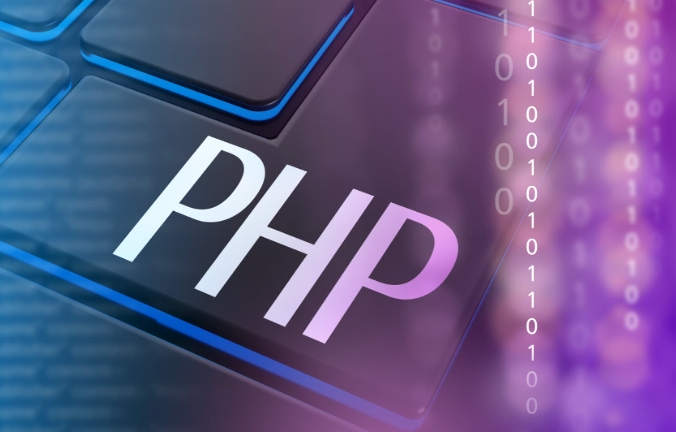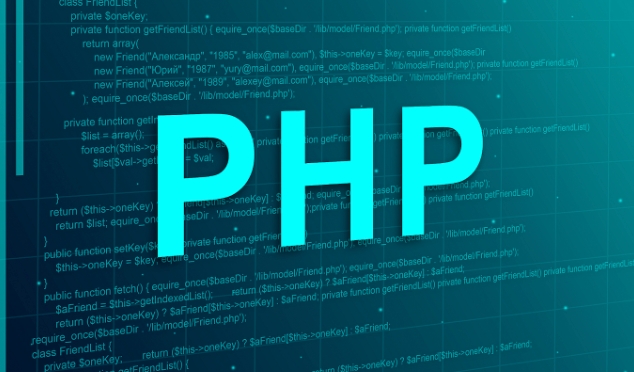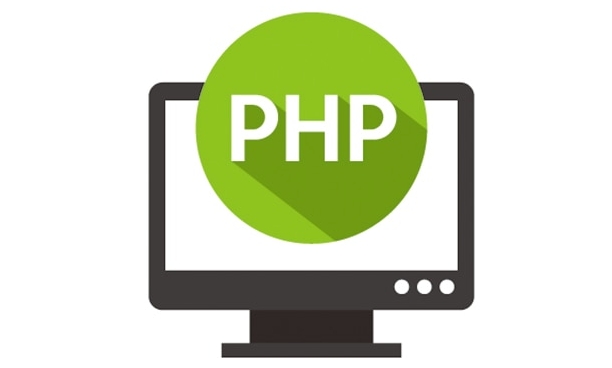Upgrading the PHP version is actually not difficult, but the key lies in the operation steps and precautions. The following are the specific methods: 1. Confirm the current PHP version and running environment, use the command line or phpinfo.php file to view; 2. Select the appropriate new version and install it. It is recommended to install it with 8.2 or 8.1. Linux users use package manager, and macOS users use Homebrew; 3. Migrate configuration files and extensions, update php.ini and install necessary extensions; 4. Test whether the website is running normally, check the error log to ensure that there is no compatibility problem. Follow these steps and you can successfully complete the upgrade in most situations.

Upgrading the PHP version is actually not difficult, but many people are stuck on specific operations and precautions. If you are using an older version of PHP, such as 7.4 or earlier, it is recommended to upgrade to 8.x or 8.2 as soon as possible, because the new version not only has better performance but also has stronger security.

Here are a few key points to explain how to operate:

Confirm the current PHP version and running environment
The first step is to figure out which version you are using now and how your server runs PHP. Common ones include Apache mod_php, Nginx PHP-FPM, or container environments such as Docker.
You can enter from the command line:

php -v
Look at the output results and you will know the current version. If it is running through a web server, you can also create a phpinfo.php file and open it in the browser to see the details.
Different environment upgrade methods are slightly different. If you confirm the architecture and then do it, it will be easy to make mistakes.
Select the right new version and install it
The official PHP website (php.net) will list all stable versions. Generally speaking, it is recommended to upgrade directly to the latest 8.2 or 8.1 unless you have compatibility issues with the framework or CMS (such as WordPress plug-in).
Linux users can install it through a package manager, such as Ubuntu:
sudo apt install php8.2
If you have multiple PHP versions installed, you may need to use update-alternatives to switch the default version. For macOS users who use Homebrew, you can use:
brew install php@8.2
Then remember to link to the correct path.
Some systems also support PPA sources like Ondrej Sury , which can easily manage multiple PHP versions. You can check the official documentation or community guide for this.
Migration of configuration files and extensions
Don't rush to restart the service after upgrading, first check whether the configuration file needs to be updated. Usually the new version of php.ini will be placed under /etc/php/8.2/cli/php.ini or similar paths.
You need to copy the custom configurations in the old version (such as memory_limit , upload_max_filesize ). Also pay attention to whether the extension is enabled, such as:
- mysqli
- pdo_mysql
- opcache
- exif
- intl
Some of these commonly used extensions need to be installed manually, such as:
sudo apt install php8.2-mysql php8.2-curl
If you have used PHP-FPM before, you should also restart the service:
sudo systemctl restart php8.2-fpm
Apache or Nginx also requires a reload configuration.
Test whether the website is running normally
The last step is very important: Verify that your website has reported an error. Especially when many third-party plug-ins or old code are used, syntax errors or abandoned functions may occur.
You can test it in the development environment first, or temporarily enable the error log before going online:
error_reporting(E_ALL); ini_set('display_errors', 1);
Observe if there are any prompts like "Deprecated" or "Fatal error". If everything is OK, the new version can be put into use.
Basically that's it. The whole process is not complicated, but details are easily overlooked, especially the configuration files and extension parts. As long as you take it step by step, you can upgrade smoothly in most cases.
The above is the detailed content of How to upgrade PHP version?. For more information, please follow other related articles on the PHP Chinese website!

Hot AI Tools

Undress AI Tool
Undress images for free

Undresser.AI Undress
AI-powered app for creating realistic nude photos

AI Clothes Remover
Online AI tool for removing clothes from photos.

Clothoff.io
AI clothes remover

Video Face Swap
Swap faces in any video effortlessly with our completely free AI face swap tool!

Hot Article

Hot Tools

Notepad++7.3.1
Easy-to-use and free code editor

SublimeText3 Chinese version
Chinese version, very easy to use

Zend Studio 13.0.1
Powerful PHP integrated development environment

Dreamweaver CS6
Visual web development tools

SublimeText3 Mac version
God-level code editing software (SublimeText3)

Hot Topics
 How to combine two php arrays unique values?
Jul 02, 2025 pm 05:18 PM
How to combine two php arrays unique values?
Jul 02, 2025 pm 05:18 PM
To merge two PHP arrays and keep unique values, there are two main methods. 1. For index arrays or only deduplication, use array_merge and array_unique combinations: first merge array_merge($array1,$array2) and then use array_unique() to deduplicate them to finally get a new array containing all unique values; 2. For associative arrays and want to retain key-value pairs in the first array, use the operator: $result=$array1 $array2, which will ensure that the keys in the first array will not be overwritten by the second array. These two methods are applicable to different scenarios, depending on whether the key name is retained or only the focus is on
 How to use php exit function?
Jul 03, 2025 am 02:15 AM
How to use php exit function?
Jul 03, 2025 am 02:15 AM
exit() is a function in PHP that is used to terminate script execution immediately. Common uses include: 1. Terminate the script in advance when an exception is detected, such as the file does not exist or verification fails; 2. Output intermediate results during debugging and stop execution; 3. Call exit() after redirecting in conjunction with header() to prevent subsequent code execution; In addition, exit() can accept string parameters as output content or integers as status code, and its alias is die().
 Applying Semantic Structure with article, section, and aside in HTML
Jul 05, 2025 am 02:03 AM
Applying Semantic Structure with article, section, and aside in HTML
Jul 05, 2025 am 02:03 AM
The rational use of semantic tags in HTML can improve page structure clarity, accessibility and SEO effects. 1. Used for independent content blocks, such as blog posts or comments, it must be self-contained; 2. Used for classification related content, usually including titles, and is suitable for different modules of the page; 3. Used for auxiliary information related to the main content but not core, such as sidebar recommendations or author profiles. In actual development, labels should be combined and other, avoid excessive nesting, keep the structure simple, and verify the rationality of the structure through developer tools.
 The requested operation requires elevation Windows
Jul 04, 2025 am 02:58 AM
The requested operation requires elevation Windows
Jul 04, 2025 am 02:58 AM
When you encounter the prompt "This operation requires escalation of permissions", it means that you need administrator permissions to continue. Solutions include: 1. Right-click the "Run as Administrator" program or set the shortcut to always run as an administrator; 2. Check whether the current account is an administrator account, if not, switch or request administrator assistance; 3. Use administrator permissions to open a command prompt or PowerShell to execute relevant commands; 4. Bypass the restrictions by obtaining file ownership or modifying the registry when necessary, but such operations need to be cautious and fully understand the risks. Confirm permission identity and try the above methods usually solve the problem.
 How to create an array in php?
Jul 02, 2025 pm 05:01 PM
How to create an array in php?
Jul 02, 2025 pm 05:01 PM
There are two ways to create an array in PHP: use the array() function or use brackets []. 1. Using the array() function is a traditional way, with good compatibility. Define index arrays such as $fruits=array("apple","banana","orange"), and associative arrays such as $user=array("name"=>"John","age"=>25); 2. Using [] is a simpler way to support since PHP5.4, such as $color
 php raw post data php
Jul 02, 2025 pm 04:51 PM
php raw post data php
Jul 02, 2025 pm 04:51 PM
The way to process raw POST data in PHP is to use $rawData=file_get_contents('php://input'), which is suitable for receiving JSON, XML, or other custom format data. 1.php://input is a read-only stream, which is only valid in POST requests; 2. Common problems include server configuration or middleware reading input streams, which makes it impossible to obtain data; 3. Application scenarios include receiving front-end fetch requests, third-party service callbacks, and building RESTfulAPIs; 4. The difference from $_POST is that $_POST automatically parses standard form data, while the original data is suitable for non-standard formats and allows manual parsing; 5. Ordinary HTM
 How to handle File Uploads securely in PHP?
Jul 08, 2025 am 02:37 AM
How to handle File Uploads securely in PHP?
Jul 08, 2025 am 02:37 AM
To safely handle PHP file uploads, you need to verify the source and type, control the file name and path, set server restrictions, and process media files twice. 1. Verify the upload source to prevent CSRF through token and detect the real MIME type through finfo_file using whitelist control; 2. Rename the file to a random string and determine the extension to store it in a non-Web directory according to the detection type; 3. PHP configuration limits the upload size and temporary directory Nginx/Apache prohibits access to the upload directory; 4. The GD library resaves the pictures to clear potential malicious data.
 How Do You Pass Variables by Value vs. by Reference in PHP?
Jul 08, 2025 am 02:42 AM
How Do You Pass Variables by Value vs. by Reference in PHP?
Jul 08, 2025 am 02:42 AM
InPHP,variablesarepassedbyvaluebydefault,meaningfunctionsorassignmentsreceiveacopyofthedata,whilepassingbyreferenceallowsmodificationstoaffecttheoriginalvariable.1.Whenpassingbyvalue,changestothecopydonotimpacttheoriginal,asshownwhenassigning$b=$aorp






